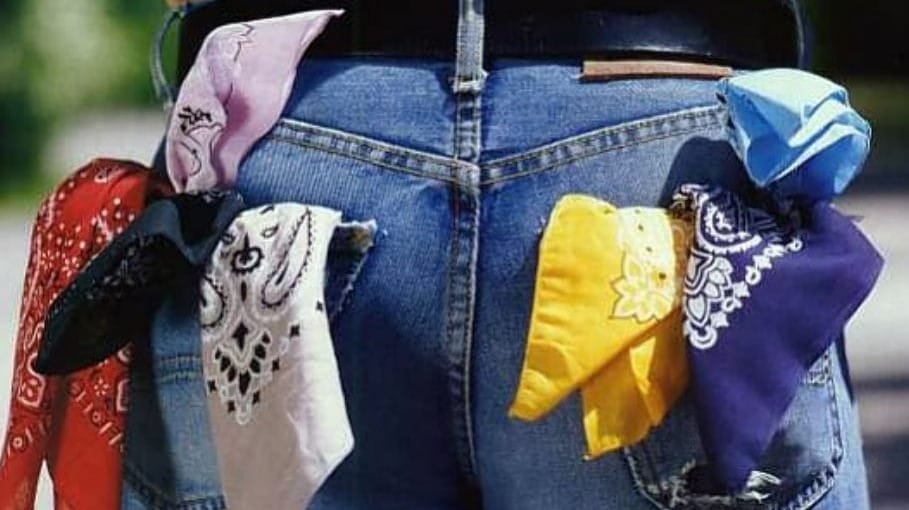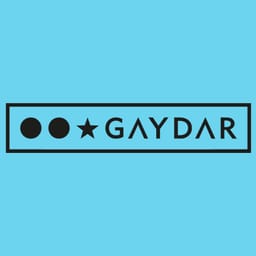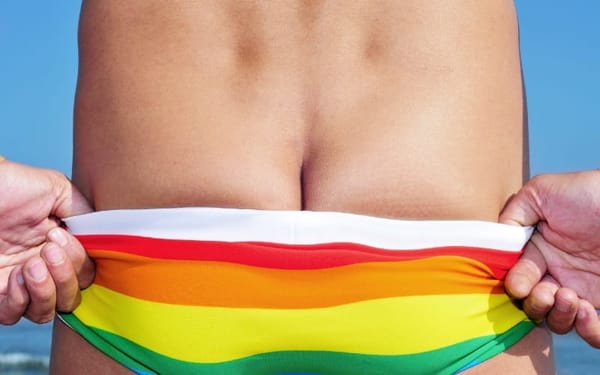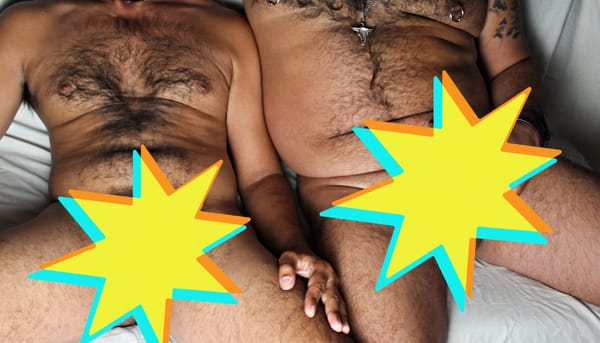Gay History: The Hanky Code
Which colour would you wear?

Non-verbal communication can be really powerful, and the Hanky Code is a great example of how we can signal information in a way that is really only visible to our target audience.
The Hanky Code uses different coloured handkerchiefs or bandanas to signal what kind of sex or kink that you're into.
Specific colours correspond to specific types of sexual encounter. The position that you're wearing the hanky - left back pocket or right back pocket - signals Top or Bottom.
If your handkerchief is in your left back pocket, you're signalling that you're a Top. If your handkerchief is in your right back pocket, you're signalling that you're a Bottom.
What was the origin of the Hanky Code?
Wearing a coloured bandana around the neck was a practical workwear accessory that was common across the United States in the mid to late 1800s - particularly for jobs such as cowboys, railroad engineers, and miners.
It's believed that it was the San Francisco gold rush of the 1850s that saw coloured bandanas begin to be used to signal information. There were few women in the goldfields of San Francisco, so when a dance was held, men would dance with each other. If a man was wearing a blue bandana, he would take the lead in the dance - a man wearing a red bandana would follow in the dance.
Because the signalling of lead or follow could easily be equated to sexual encounters, it's easy to imagine how displaying a bandana was adopted by queer men as an effective method of non-verbal communication. It was the early 1970s that queer media started to document and promote the Hanky Code as part of gay sexual culture.
What do the Hanky Code colours correspond to?
The core colours of the Hanky Code are black, blue, yellow, and red. These were the most common colours produced by manufacturers of bandanas.
- Black = BDSM
- Blue = Anal
- Yellow = Piss
- Red = Fisting
Over time, the range of colours expanded to include:
- Light Blue = Oral
- Brown = Scat
- Green = Sex Worker
There's also other colours that people may use, although there's varying interpretations of what they mean.
Is the Hanky Code still used today?
The peak of the Hanky Code was probably the 1970s and 1980s - the emergence of the internet and location-based hook-up apps made non-verbal signalling less important.
However, we still see colours being used to signify the kinks that we're into - particularly in fetish-wear.
Which colour of the Hanky Code is most popular?
We ran a quick poll of users on Gaydar.net to ask which hanky they would be wearing in their back pocket.
Perhaps unsurprisingly, Dark Blue was most popular, indicating that most guys on Gaydar.net are looking for anal sex.

The NSFW edition
If you want to admire some man-on-man action, our NSFW edition gives you every inch.
Sign in and check out our NSFW content - it's free!








